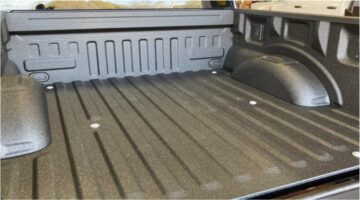For 2018, FCA has made the economically wise decision to offer the wider bodywork from the drag-special Dodge Demon available as an option on the normal Hellcat, if you can call a 707-horsepower studio apartment on dubs “normal.” I, a self-professed fan of the Hellcat engine no matter what it’s powering, took the opportunity to spend a week on the road and a day at the track with Dodge’s newest wide Challenger.
You need to have a lot of space to own a Challenger; any old garage or driveway won’t do. My garage opens on to the street. There’s no driveway, just a roll-up door, then road. You approach the garage from a 90-degree angle. Most cars, even my Ford Focus RS with what may be the world’s worst turning radius, can make the sweep into the garage without three-pointing it. In the three years I’ve lived in this house, only two cars couldn’t make it in one move: the 2018 Chevy Tahoe, and the 2016 Honda Odyssey.
The Hellcat Widebody needs three. The Challenger is America’s last Personal Luxury Coupe, where hood and trunk real estate eclipses cabin space. Where brash style–and the need for positively gigantic engines–outweighs tight tolerances, precision build quality, or a feeling that the skin has been pulled, taut, over the chassis, minimizing excess bulk.
The best move is, therefore, to escape the daily grind with your Widebody Hellcat and go straight to the desert, where there’s space, or better yet, where there’s a racetrack.
The $6,000 Wide Body option doesn’t just get you some overfenders and wheel spacers on the Hellcat; you also get new twenty-inchers shod in 305-section Pirelli P-Zero’s at all four corners, retaining the Hellcat’s square stance… there’s just a lot more of it now.
But if you really plan on any kind of moderate track work at all, or even spending Sundays in the canyons, consider brake pads, fluid, and an ultra-high performance set of tires. Oh, and budget for consumables. Driving the Hellcat from LA to Buttonwillow, 120 miles each way, running 80 minutes on track, and going home again required four fill-ups. You don’t even want to know what a matched set of 305R/20’s goes for.
Moral of the story: if you’re going to keep up with Sam Smith’s 2002 at Buttonwillow, in a streetcar, even a 707-horsepower one, you’re going to need every trick in the book.









